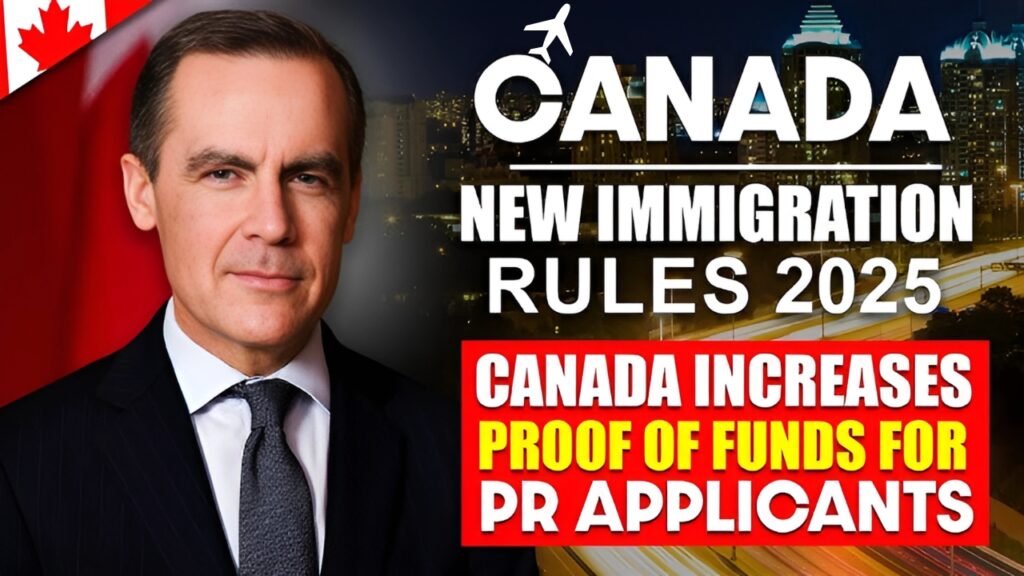
Canada raises the financial threshold for PR applicants—explore updated settlement fund requirements, practical tips, and easy-to-follow guidance for newcomers.
Understanding Canada’s New Minimum Fund Requirements for PR Applications (2025 Update)
What’s Changing?
Canada has increased the minimum settlement funds required for economic immigration applicants, with new amounts effective from July 29, 2025. If you’re applying for Permanent Residency (PR) under an economic class (such as Express Entry, Federal Skilled Worker, or Federal Skilled Trades), it’s crucial to be aware of this update.
These changes might influence your eligibility, so let’s break down what this means for you and how to be ready.
Why Did the Minimum Fund Requirement Increase?
Every year, Immigration, Refugees and Citizenship Canada (IRCC) updates these fund requirements to ensure newcomers have enough money to settle comfortably. The funds must now be at least 12.5% above the Low Income Cut-Off (LICO). These changes affect anyone applying under economic PR pathways, unless you currently work in Canada with a valid work permit.
Who Needs to Show Proof of Funds?
You must show proof if you are applying under Express Entry (FSW or FST) or other economic immigration streams.
If you have a valid Canadian job offer or are already working in Canada on a work permit, this requirement might not apply to you.
Note:
You must include yourself, your spouse or common-law partner, and all dependent children in the calculation—even if the children or partner are Canadian citizens, PRs, or not accompanying you.
New Settlement Funds: 2025 Table
Here’s a clear snapshot of the new required minimum settlement funds based on family size:
| Family Size | Minimum Funds Required (CAD) |
|---|---|
| 1 person | $3,815 |
| 2 people | $4,750 |
| 3 people | $5,840 |
| 4 people | $7,090 |
| 5 people | $8,042 |
| 6 people | $9,070 |
| 7 people | $10,098 |
| Each additional person | $1,028 |
How To Prove Your Funds
You need to prove you have these funds, and they must be both readily available and legally accessible at the moment you apply and when your visa is issued. Here’s what IRCC expects:
Acceptable proof of funds
Official letters from your financial institutions, printed on their letterhead.
Letters must include:
Bank’s contact details
Your full legal name
List of all current accounts, account numbers, and their opening dates
Current account balances and six-month average balances
Outline of any debts such as loans or credit cards
Important Tips
Liquid funds only! You can use cash, savings, stocks, bonds, treasury bills, banker’s drafts, traveler’s cheques, or money orders.
No property value, car ownership, or borrowed money is acceptable.
If you’re including a spouse, you may show joint accounts. If only your spouse holds accounts, you must clearly prove you can access those funds.
Bringing Funds Into Canada: The Rules
You’re allowed to bring as much money as you want to Canada, but any amount over CAN$10,000 must be declared to Canadian customs on arrival. Not declaring can result in fines or even seizure of your funds. Acceptable ways to bring money include:
Cash
Stocks, bonds, or treasury bills
Banker’s drafts, traveler’s cheques, money orders
Why Are Settlement Funds Required?
These funds are meant to help you cover the cost of living and the transition period when you first arrive in Canada. Since you might not have a job immediately upon landing, it ensures you can support yourself and your family, pay for housing, food, and daily necessities as you settle in.
Real-Life Guidance: Prepare for Your Move
Here’s what you can do right now:
Calculate your total family size for PR purposes (include everyone, even if some aren’t coming)
Check the amount you’ll need (see the table above)
Gather official bank statements and request the required documentation from your bank
Monitor currency fluctuations so your funds don’t dip below the threshold
Research the cost of living in your chosen city or province—expenses can vary widely
Tip:
The minimum required funds should be your starting point. For a smooth settlement, consider budgeting extra for unforeseen expenses, like housing deposits, winter clothing, or school supplies.
FAQs
1. What happens if my funds drop below the minimum after I apply?
IRCC can reject your application if, at the time of issuing your visa, you can’t show the required funds. Keep your balance above the cut-off until you receive PR.
2. Do I need to convert all funds to Canadian dollars?
No, but you must show proof of value using official exchange rates at the time of application. Funds must be liquid and accessible.
3. If my spouse is abroad, do I still count them in my family size?
Yes, include your spouse and all dependent children (even if they’re not moving to Canada with you), as required by IRCC guidelines.
Key Takeaways
Canada’s minimum funds for PR applications are now higher effective July 29, 2025.
Amounts depend on family size—double-check your numbers.
Official, detailed bank documentation is required with your application.
Declare funds over $10,000 when landing in Canada.
By planning ahead and making sure your documents are ready, you can proceed confidently with your Canadian PR application under these updated requirements.
Australia Subclass 491 Visa August 2025: Stepwise Process for Regional Skilled Work Migrants